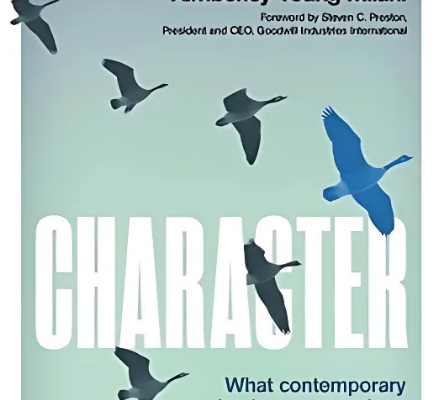Last week I had a discussion with two business partners. They were in their late forties and the topic of retirement planning came up. One said he planned to work another twenty years and the other said she was not sure about retirement but was not at the point where she wanted to think about leaving or selling the business. “Maybe in ten years or so I will be ready for the succession planning discussion,” she said.
This is not the first time I have heard a business owner say that. In fact, we wrote a blog on that topic called The Business Owner’s Countdown to Retirement. For many, the word “succession” means retirement. In an ideal world, a business owner would have time to plan every detail of their succession-retirement, from who would take over the business to the date of exit and transferring out of the business when it is at its highest worth. However, this takes time, and not everyone has that luxury.
I encouraged the owner to think about it in another way. What if you didn’t have the luxury of another 10 years? What if tomorrow was your succession, whether you wanted it or not? What would you want that to look like? Simply put, replace the word “succession” with “contingency”.
As you think about your own succession, ask yourself, “What would happen to the business if tomorrow I died suddenly or experienced a debilitating illness? What would happen if my business partner were to lose half their shares of the business due to a divorce next year?” These are heavy thoughts, but sometimes the tough questions provide us with the best opportunity to prepare for potential challenges.
On the other hand, it is not only negative experiences that can derail long-term plans. We have worked with owners who had no interest in retiring for many years, but when faced with an offer they could not resist, accepted an accelerated exit. Sometimes these transactions come unexpectedly and close very quickly. Without a proper succession plan, an owner may be forced to make some unwanted decisions for an accelerated exit.
In situations like these, without the luxury of a longer runway, last minute succession planning can be challenging, or even impossible to implement. Like the two owners mentioned earlier in this article, for many, succession planning is daunting and a long way off.
However, even without a formal succession plan, it would still be useful to consider a contingency plan – and the first step to any plan is asking the right questions.
1. What are the risks or events that could derail your business?
Most of us believe the only thing that could keep us from coming into work each day would be death or a major disability. However, it could be something minor that could impede our decision-making ability or keep someone off a short period of time that would have a detrimental impact on the business. The health of a spouse or child could pull one’s focus out of the business. Other events such as marital breakdown, economic uncertainty or other outside factors could impact a formal succession plan and make it that much more important to have a contingency plan.
2. What effect would these risks or events have on your personal life and your business?
Even though we look at our personal and business lives as separate, they are often intertwined. Personal lives are funded by the success of the business. Should that business be derailed even temporarily, there would be an echoing impact to the personal side. Loss of income in the business often equates to loss of income at home.
3. What tools are available to mitigate these issues?
In order to help mitigate these issues, a thorough contingency plan would consider the following tools:
- Key Person Life and Disability Insurance to replace the loss of a partner.
- Buy Sell Life and Disability Insurance to fund the buyout of a partner in the event of death or disability.
- Personal Disability and Critical Illness Insurance to limit the impact on one’s personal life and continue their personal income in the event of injury or illness.
- Having access to a line of credit that may help alleviate financial stress or a cash wedge built up in the corporation.
4. How should these contingencies be documented?
A well-documented business plan should contain a section on the contingency to address the “what if” situations. It should reference the following documents:
- A Shareholders Agreement that specifically documents the risks, how they are to be handled, and the funding mechanism (tools available) to alleviate them.
- Wills and POA should be documented.
- Insurance policies should have the proper owner, payor and beneficiary.
It is important when documenting to have all parties involved, including your lawyer, your accountant, and your financial advisor. Just like any team, having everyone working together and on the same page will make that part of the plan smoother in the event it needs to be implemented.
5. How often should the plan be updated?
Life and business can change quickly. It is important to not only review the plan and supporting documents on an annual basis but also when any major life events take place, such as:
- A considerable change in the valuation of the business.
- The addition or loss of a partner’s spouse (death/martial breakdown).
- The addition or loss of a key person to the company.
- If there is any change in ownership, even share ownership or transfer.
- When new debts or projects are undertaken by the business, potentially requiring more capital.
Succession planning starts with a contingency plan. Although we may not plan to sell or retire or may be in the early stages of the business cycle, it is vital to have a plan and revisit that plan regularly, so that when the time does come to sell or retire, your intentions are already formulated and much of the plan is in place.
At Tall Oak Private Wealth, we help business owners properly plan through all stages of the business life cycle. Reach out to us today to get your plan started by clicking here.
This material is provided for general information and is subject to change without notice. Although every effort has been made to compile this material from reliable sources; no warranty can be made as to its accuracy or completeness, and we assume no responsibility for any reliance upon it. Before acting on any of the above, please contact Tall Oak Private Wealth of Raymond James Ltd., for individual financial advice based on your personal circumstances. Raymond James Ltd. – Member – Canadian Investor Protection Fund. Insurance offered through Raymond James Financial Planning Ltd., not a member – Canadian Investor Protection Fund.
The views expressed in this commentary are those of Tall Oak Capital Advisors as at the date of publication and are subject to change without notice. This commentary is presented only as a general source of information and is not intended as a solicitation to buy or sell specific investments, nor is it intended to provide tax or legal advice. Statistics, factual data and other information are from sources Tall Oak believes to be reliable but their accuracy cannot be guaranteed. This commentary is intended for distribution only in those jurisdictions where Tall Oak Capital Advisors are registered. Securities-related products and services are offered through Raymond James Correspondent Services Ltd., member Canadian Investor Protection Fund. Insurance products and services are offered through Gryphin Advantage Inc., which is not a member-Canadian Investor Protection Fund. This commentary may provide links to other Internet sites for the convenience of users. Tall Oak Capital Advisors is not responsible for the availability or content of these external sites, nor does Tall Oak Capital Advisors endorse, warrant or guarantee the products, services or information described or offered at these other Internet sites. Users cannot assume that the external sites will abide by the same Privacy Policy which Tall Oak Capital Advisors adheres to.




